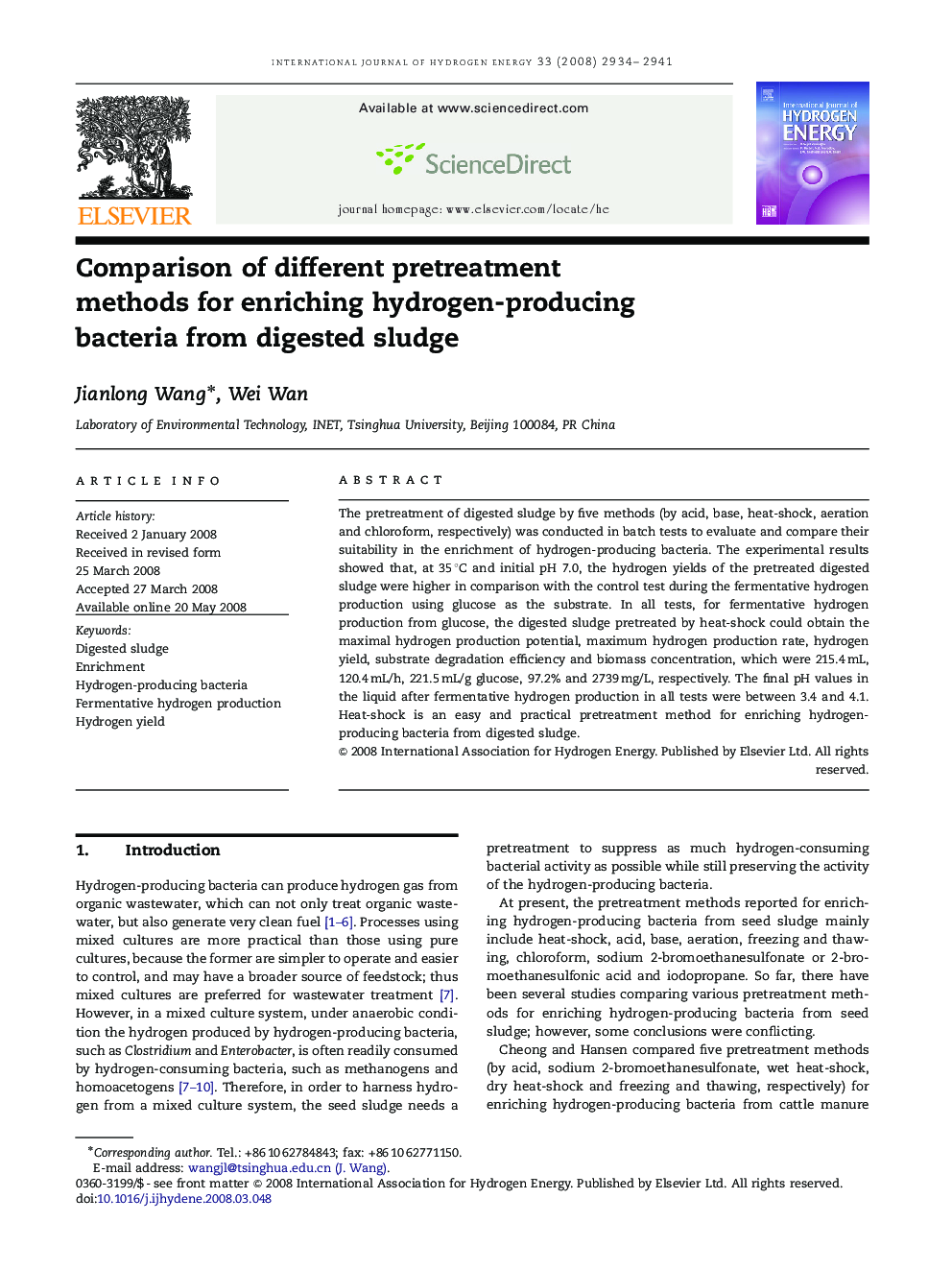| Article ID | Journal | Published Year | Pages | File Type |
|---|---|---|---|---|
| 1279578 | International Journal of Hydrogen Energy | 2008 | 8 Pages |
The pretreatment of digested sludge by five methods (by acid, base, heat-shock, aeration and chloroform, respectively) was conducted in batch tests to evaluate and compare their suitability in the enrichment of hydrogen-producing bacteria. The experimental results showed that, at 35 °C and initial pH 7.0, the hydrogen yields of the pretreated digested sludge were higher in comparison with the control test during the fermentative hydrogen production using glucose as the substrate. In all tests, for fermentative hydrogen production from glucose, the digested sludge pretreated by heat-shock could obtain the maximal hydrogen production potential, maximum hydrogen production rate, hydrogen yield, substrate degradation efficiency and biomass concentration, which were 215.4 mL, 120.4 mL/h, 221.5 mL/g glucose, 97.2% and 2739 mg/L, respectively. The final pH values in the liquid after fermentative hydrogen production in all tests were between 3.4 and 4.1. Heat-shock is an easy and practical pretreatment method for enriching hydrogen-producing bacteria from digested sludge.
